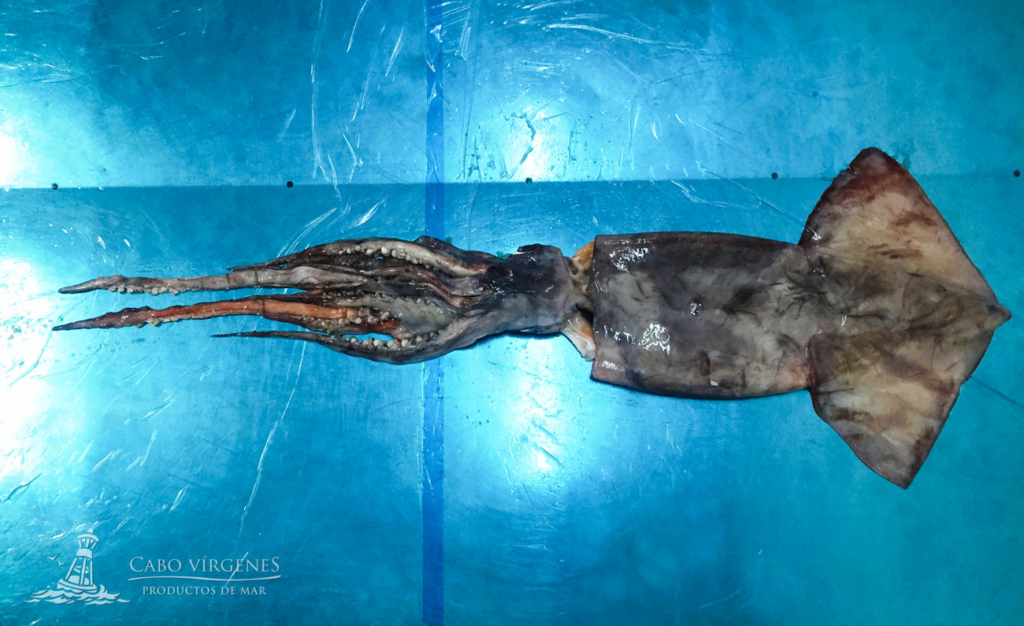
Peruvian squid Dosidicus Gigas Cabo Vírgenes
The Humboldt squid (Dosidicus gigas) is widely distributed in the eastern Pacific Ocean ().This species is a crucial fishing target in the waters off Peru, Chile, Ecuador, and the Gulf of California due to its high economic value (Keyl et al., 2008; Csirke et al., 2015; Ibáñez et al., 2015).In 2001, China started to investigate and capture D. gigas stock off Peruvian waters, with a.

Jumbo Squid Humboldt Squid at Night Dosidicus gigas Loreto Sea of Cortez Baja California East
Dosidicus gigas, an ommastrephid squid commonly known as the Humboldt or jumbo flying squid, is an oceanic predator that supports the largest single-species invertebrate fishery in the world (FAO 2018). D. gigas is also an important food source for many economically valuable fishes such as sharks and billfishes.

Giant Humboldt Squid (Dosidicus gigas) underwater at night in the Sea of Cortez, Mexico Stock
Humboldt squid (Dosidicus gigas) Category: Molluscs Biologically, squid belong to the class of mollusks known as cephalopods, which also include octopus. Squid are decapods, having 10 tentacles, compared to the eight arms of octopuses. They also are free-swimming creatures and exhibit schooling behavior similar to many species of fish.
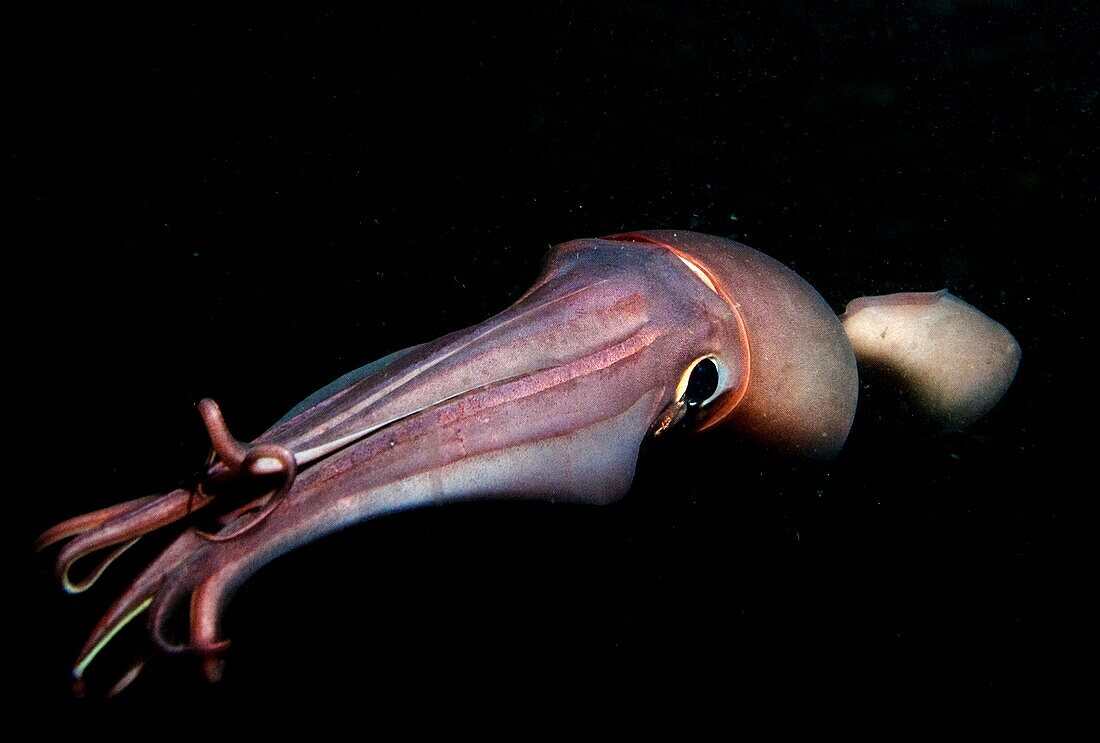
humboldt or Jumbo squid, Dosidicus gigas … License image 70342368 lookphotos
A unique 16-year time series of deep video surveys in Monterey Bay reveals that the Humboldt squid, Dosidicus gigas, has substantially expanded its perennial geographic range in the eastern North P.

Jumbo Squid Humboldt Squid at Night Dosidicus gigas Loreto Sea of Cortez Baja California East
Dosidicus gigas, otherwise known as the Humboldt or jumbo squid, inhabits the Eastern Pacific Ocean from northern California to southern Chile. This squid is believed to have both small scale migration within the Gulf of California, from the Baja peninsula to Guaymas Basin.
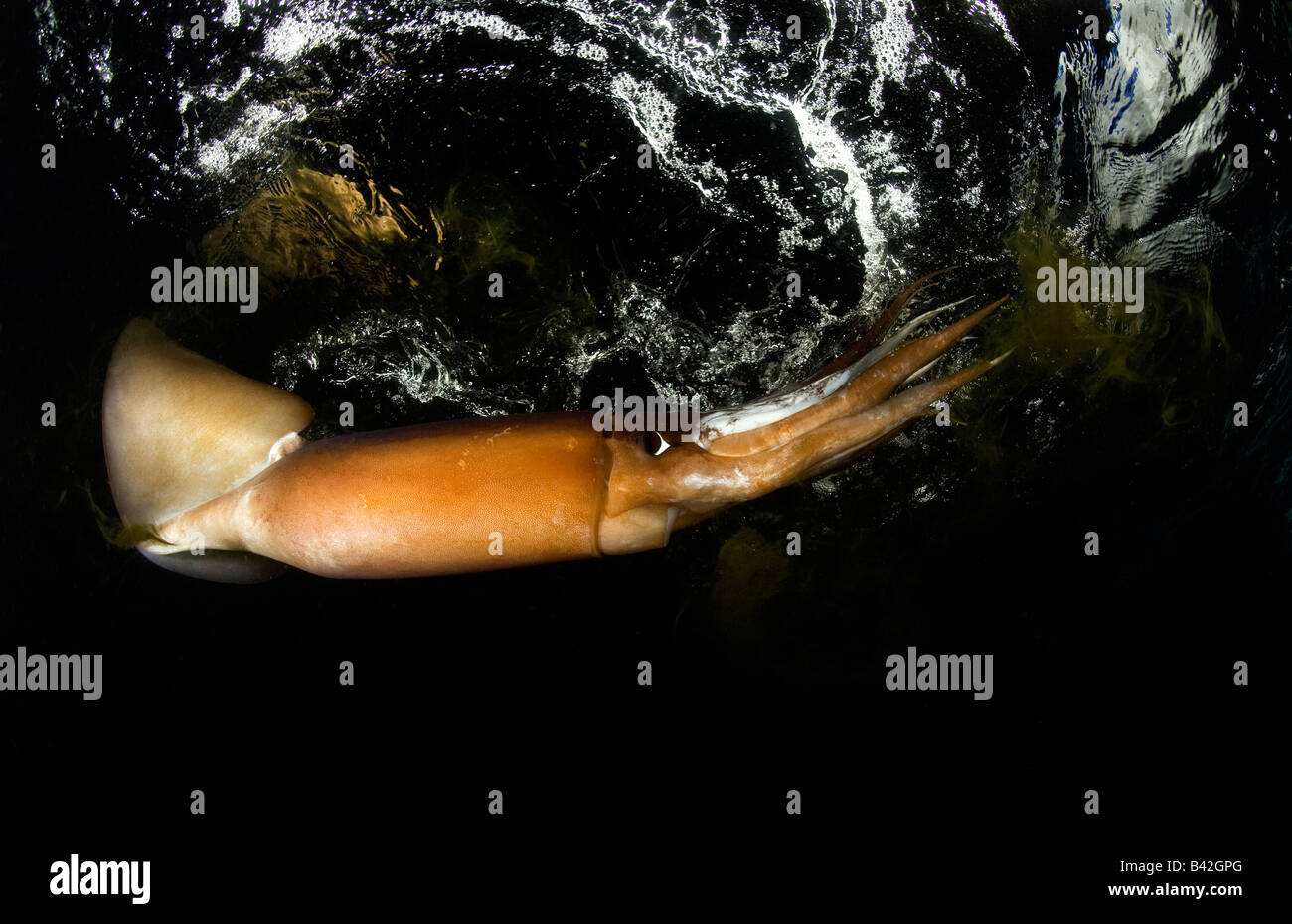
Jumbo Squid Humboldt Squid at Night Dosidicus gigas Loreto Sea of Cortez Baja California East
Dosidicus gigas (Humboldt or jumbo squid) (Orbigny, 1835) is the largest ommastrephid squid, reaching up to 1.2m mantle length and 65kg in weight.

Jumbo or Humboldt squid, Dosidicus gigas, Sea of Cortez, Mexico Stock Photo 30697080 Alamy
Subfamily Ommastrephinae. Dosidicus gigas, captured by a fisherman off Westport, WA. Mantle length approximately 60 cm. (Photo by: Kirt Onthank 2009) Description: As with other squid, this pelagic cephalopod has 8 arms plus two tentacles (the arms taper to the end, while the tentacles have a wider, flattened "club" region near the tip).
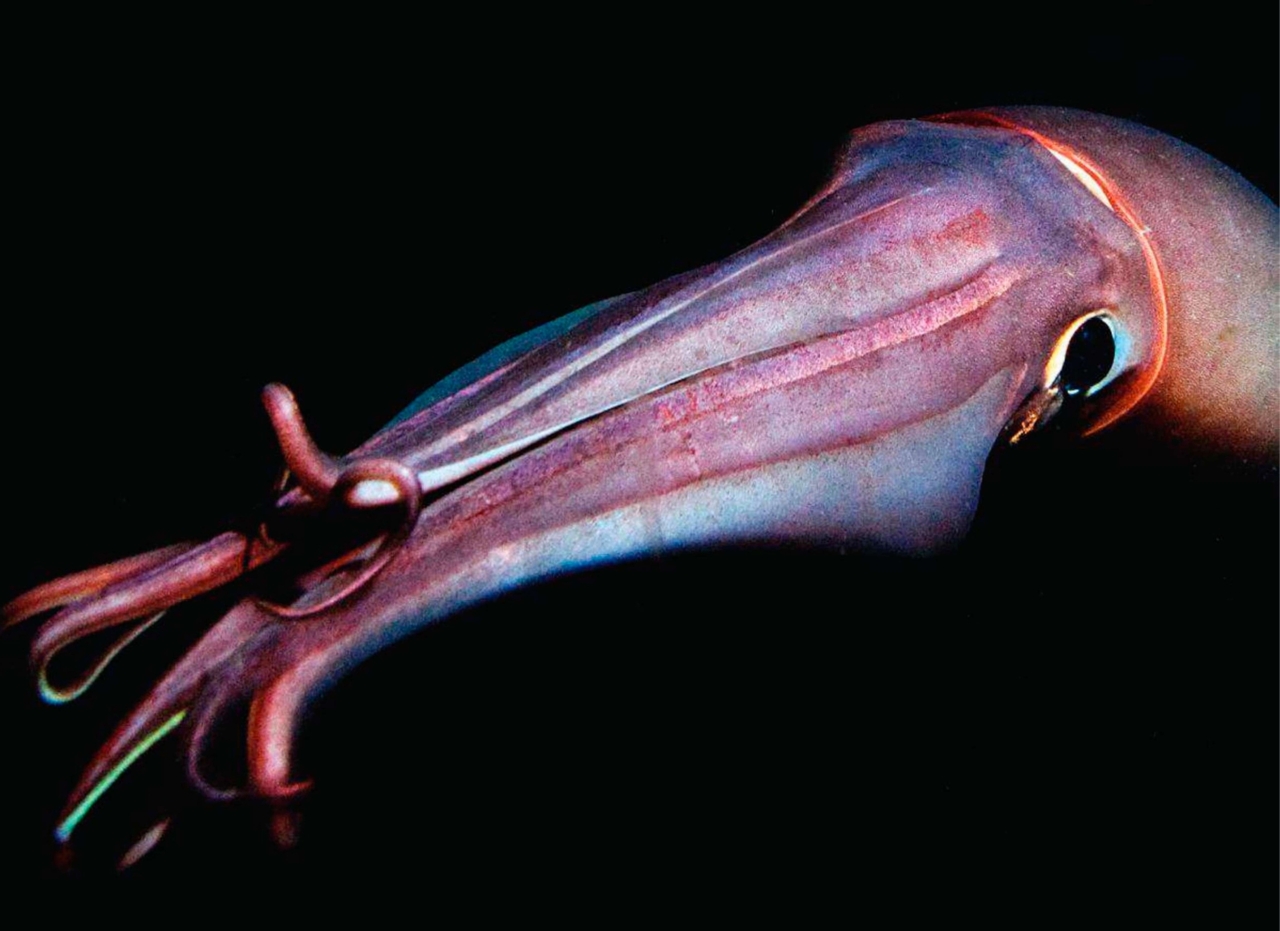
Calamaro di Humboldt ,Dosidicus gigas,Jumbo squid,Humboldt Squid
The Humboldt squid ( Dosidicus gigas ), also known as jumbo squid or jumbo flying squid (EN), and Pota in Peru or Jibia in Chile (ES) is a large, predatory squid living in the eastern Pacific Ocean. It is the only known species of the genus Dosidicus of the subfamily Ommastrephinae, family Ommastrephidae. [4]

Jumbo Squid Humboldt Squid at Night Dosidicus gigas Loreto Sea of Cortez Baja California East
Dosidicus gigas, Humboldt squid | Semantic Scholar Corpus ID: 82682805 Dosidicus gigas, Humboldt squid R. Rosa, C. Yamashiro, +7 authors W. Gilly Published 22 September 2013 Environmental Science, Biology TLDR

GIANT SQUID (DOSIDICUS GIGAS) Biko Seafood
Dosidicus gigas (Humboldt Squid) is a species of cephalopods in the family arrow squids. They are native to Pacific Ocean. They are nocturnal carnivores. They rely on swimming to move around. EOL has data for 38 attributes, including: Body symmetry bilaterally symmetric body shape bilaterally symmetric diet includes zooplankton

Jumbo Squid Humboldt Squid at Night Dosidicus gigas Loreto Sea of Cortez Baja California East
Three intraspecific groups have been identified for Giant or Jumbo flying squid (Dosidicus gigas) in the Southeast Pacific, based on size-at-maturity (Nigmatullin et al. 2001), but as no genetic difference has been found between the three proposed sub-unit populations, thus it is still considered to constitute a single stock (Xu et al. 2017.

Giant Humboldt Squid (Dosidicus gigas) underwater at night in the Sea of Cortez, Mexico Stock
The Humboldt squid, scientifically known as Dosidicus gigas, also known as the jumbo squid, is one of the largest predatory squid species of cephalopods. Native to the eastern Pacific ocean's warm waters, their population has flourished in recent years, such as far as northern Alaska.

Giant Humboldt Squid (Dosidicus gigas) underwater at night in the Sea of Cortez, Mexico Stock
Jumbo squid, Dosidicus gigas (D'Orbigny, 1835 in 1834-1847), aka jumbo flying squid or Humboldt squid, have many former scientific names (synonyms): Ommastrephes gigas (D'Orbigny, 1835 in 1834-1847), Dosidicus eschrichtii (Steenstrup, 1857), Ommastrephes giganteus (D'Orbigny, 1839-1842 in Férussac and D'Orbigny, 1834-1848), Dosidicus steenstrupii (Pfeffer, 1884), Sepia nigra (Bosc.

Giant Humboldt Squid (Dosidicus gigas) underwater at night in the Sea of Cortez, Mexico Stock
The Humboldt squid ( Dosidicus gigas ), also known as jumbo squid or jumbo flying squid (EN), and Pota in Peru or Jibia in Chile (ES) is a large, predatory squid living in the eastern Pacific Ocean. It is the only known species of the genus Dosidicus of the subfamily Ommastrephinae, family Ommastrephidae. Show More Animal name origin
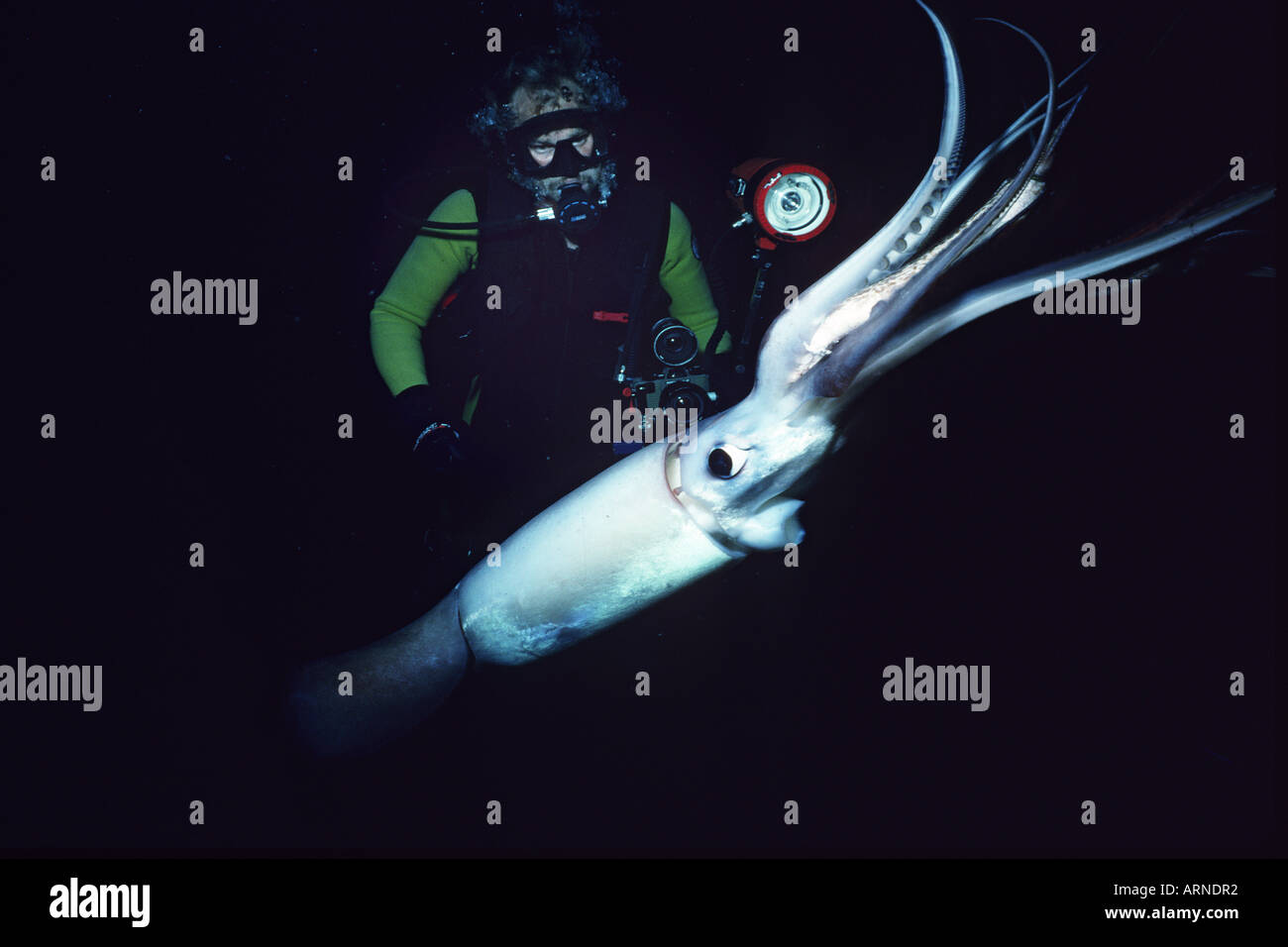
A diver photographs a Humboldt squid Dosidicus gigas These six foot squid spend their entire
Dosidicus gigas Read our Complete Guide to Classification of Animals. Humboldt Squid Conservation Status Data Deficient Humboldt Squid Locations Ocean Humboldt Squid Facts Prey Fish, crustaceans, and other cephalopods Group Behavior School
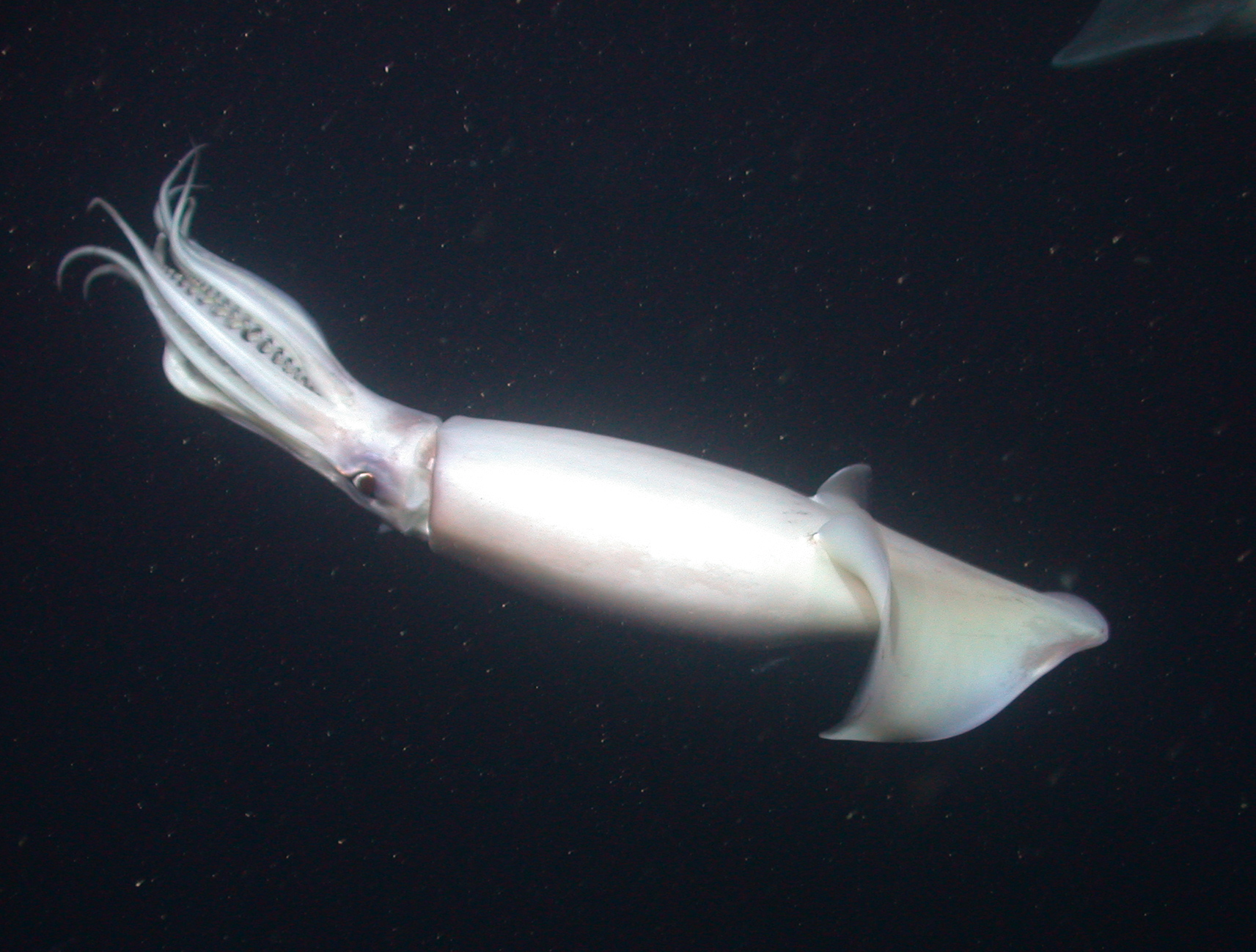
Humboldt Squid (Dosidicus gigas)
The Humboldt squid Dosidicus gigas is widely distributed in the Eastern Pacific Ocean, from northern California (40°N) to southern Chile (45°S) []. D. gigas is the most abundant economic squid species in the Eastern Pacific, especially in the areas off Peru and California [2,3].As an important species in the pelagic ecosystem, D. gigas plays an important role in trophic dynamics [1,4,5].